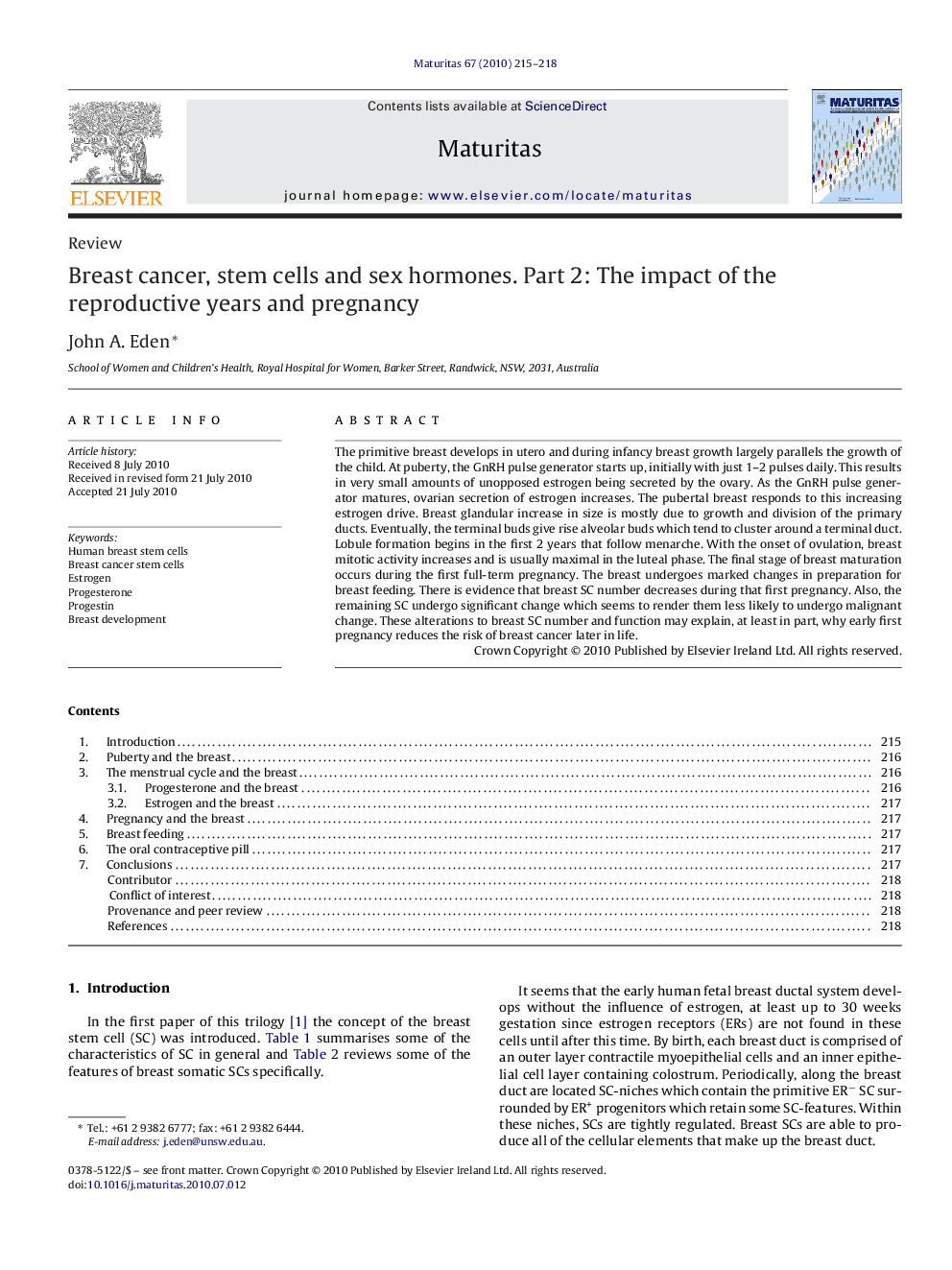| Article ID | Journal | Published Year | Pages | File Type |
|---|---|---|---|---|
| 1917888 | Maturitas | 2010 | 4 Pages |
The primitive breast develops in utero and during infancy breast growth largely parallels the growth of the child. At puberty, the GnRH pulse generator starts up, initially with just 1–2 pulses daily. This results in very small amounts of unopposed estrogen being secreted by the ovary. As the GnRH pulse generator matures, ovarian secretion of estrogen increases. The pubertal breast responds to this increasing estrogen drive. Breast glandular increase in size is mostly due to growth and division of the primary ducts. Eventually, the terminal buds give rise alveolar buds which tend to cluster around a terminal duct. Lobule formation begins in the first 2 years that follow menarche. With the onset of ovulation, breast mitotic activity increases and is usually maximal in the luteal phase. The final stage of breast maturation occurs during the first full-term pregnancy. The breast undergoes marked changes in preparation for breast feeding. There is evidence that breast SC number decreases during that first pregnancy. Also, the remaining SC undergo significant change which seems to render them less likely to undergo malignant change. These alterations to breast SC number and function may explain, at least in part, why early first pregnancy reduces the risk of breast cancer later in life.
